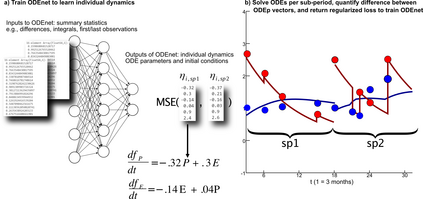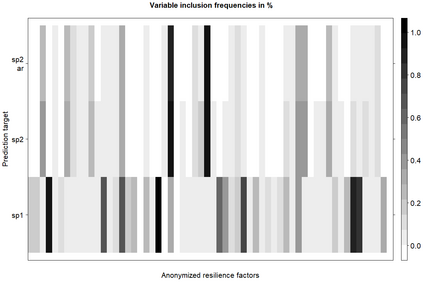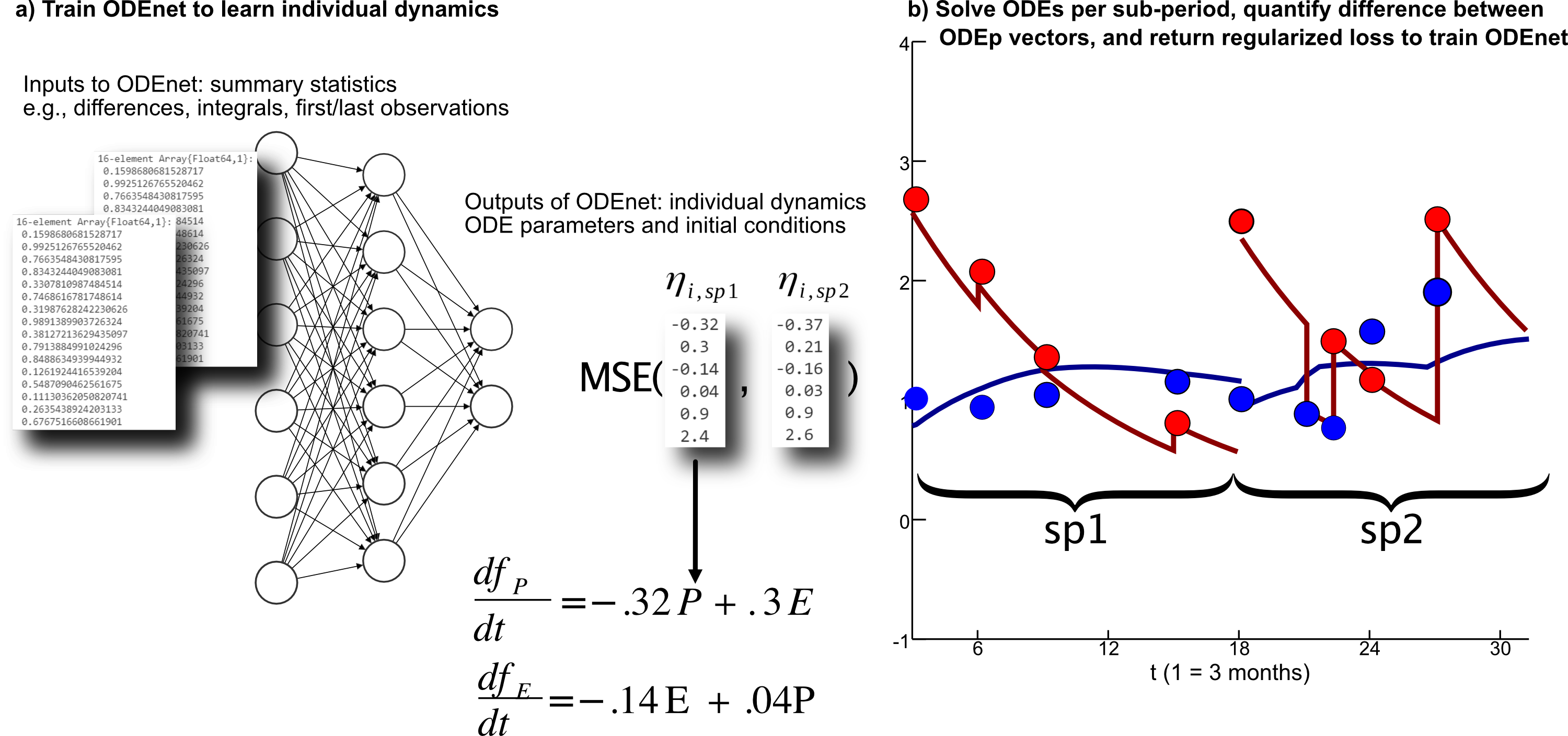When modeling longitudinal biomedical data, often dimensionality reduction as well as dynamic modeling in the resulting latent representation is needed. This can be achieved by artificial neural networks for dimension reduction, and differential equations for dynamic modeling of individual-level trajectories. However, such approaches so far assume that parameters of individual-level dynamics are constant throughout the observation period. Motivated by an application from psychological resilience research, we propose an extension where different sets of differential equation parameters are allowed for observation sub-periods. Still, estimation for intra-individual sub-periods is coupled for being able to fit the model also with a relatively small dataset. We subsequently derive prediction targets from individual dynamic models of resilience in the application. These serve as interpretable resilience-related outcomes, to be predicted from characteristics of individuals, measured at baseline and a follow-up time point, and selecting a small set of important predictors. Our approach is seen to successfully identify individual-level parameters of dynamic models that allows us to stably select predictors, i.e., resilience factors. Furthermore, we can identify those characteristics of individuals that are the most promising for updates at follow-up, which might inform future study design. This underlines the usefulness of our proposed deep dynamic modeling approach with changes in parameters between observation sub-periods.
翻译:当需要模拟纵向生物医学数据时,往往需要以维度减少和动态模式模拟由此产生的潜在代表度,这可以通过人为神经网络减少维度,以及个人轨迹动态模型的差别方程式来实现。然而,迄今为止,这些方法假定个人动态参数在整个观察期间保持不变。在心理复原力研究应用的推动下,我们提议在允许不同组别差异方程参数用于观测分期时延长一个期限。不过,对个人内部分期的估算也是为了能够将模型与相对较小的数据集相匹配。我们随后从应用中的单个弹性动态模型中得出预测目标。这些预测结果可以解释为与复原力有关的结果,从个人特征中预测,在基线和后续时间点上进行测量,并选择少数重要的预测器。我们的方法被认为成功地确定了动态模型的单个层面参数,使我们能够精确地选择预测器,即复原力因素。此外,我们可以确定个人的特点,这些特征对于在应用中的个人复原力的单个动态模型中进行更新最为有希望。这些预测结果可以被解释为根据个人的特点,在下一个阶段的参数中进行预测,从而了解未来设计。









